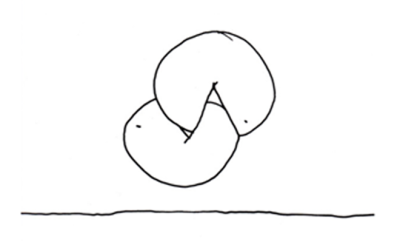
The Thin Line Between Love and Hate
Here is a fascinating research study on the thin line between between love and hate reported by the Daily Mail last October.
There really is a thin line between love and hate – at least in the brain, scientists have shown.
A new study reveals that the brain’s “love” and “hate” circuits share identical structures.
Both include regions known as the putamen and insula which are linked to aggression and distress.
Professor Semir Zeki, who carried out the brain scan study at University College London, said: “Hate is often considered to be an evil passion that should, in a better world, be tamed, controlled, and eradicated.
“Yet to the biologist, hate is a passion that is of equal interest to love.
“Like love, it is often seemingly irrational and can lead individuals to heroic and evil deeds. How can two opposite sentiments lead to the same behaviour?”
In an attempt to find out, Prof Zeki’s team scanned 17 male and female volunteers while they looked at pictures of individuals they hated, as well as familiar “neutral” faces.
Viewing a hated person activated distinct areas of the brain described by the scientists as the “hate circuit”.
Previously, the same team had carried out a similar study of people shown pictures of their romantic partners.
The “hate circuit” was found to include structures important for generating aggressive behaviour, and translating angry thought into action.
It also involved a part of the frontal cortex critical to predicting the actions of others.
The putamen and insula are two distinct structures in the sub-cortex, which lies behind the cerebral cortex, or “thinking” region.
Earlier work has implicated the putamen in the perception of contempt and disgust and it may also be part of the motor system that is mobilised to take action. The insula controls the brain’s distress response.
Prof Zeki said: “Significantly, the putamen and insula are also both activated by romantic love. This is not surprising. The putamen could also be involved in the preparation of aggressive acts in a romantic context, as in situations when a rival presents a danger.
“Previous studies have suggested that the insula may be involved in responses to distressing stimuli, and the viewing of both a loved and a hated face may constitute such a distressing signal.
“A marked difference in the cortical pattern produced by these two sentiments of love and hate is that, whereas with love large parts of the cerebral cortex associated with judgment and reasoning become de-activated, with hate only a small zone, located in the frontal cortex, becomes de-activated.
“This may seem surprising since hate can also be an all-consuming passion, just like love. But whereas in romantic love, the lover is often less critical and judgmental regarding the loved person, it is more likely that in the context of hate the hater may want to exercise judgment in calculating moves to harm, injure or otherwise extract revenge.”
The activity of some of the structures varied according to how much “hate” a volunteer said he or she felt.
A state of hate could therefore be objectively quantified, said Prof Zeki, whose research is reported in the online journal PLoS One.
He added: “This finding may have legal implications in criminal cases, for example.”
There remains one big difference between love and hate. While romantic love is directed at just one person, hate can target numbers of individuals or groups defined by their race, gender, social or cultural background or political beliefs.
Prof Zeki now plans to investigate these different varieties of hate.
First published at www.dailymail.co.uk








1 Comment